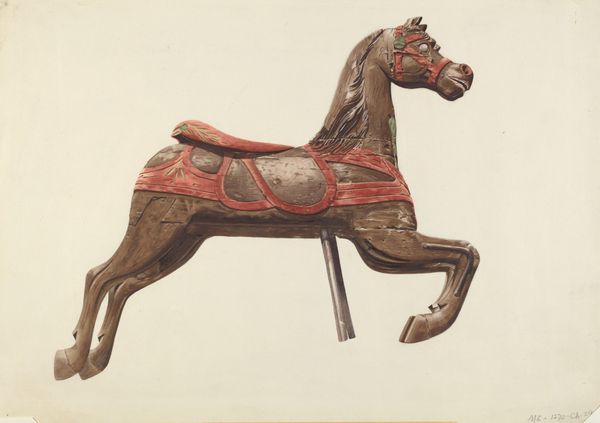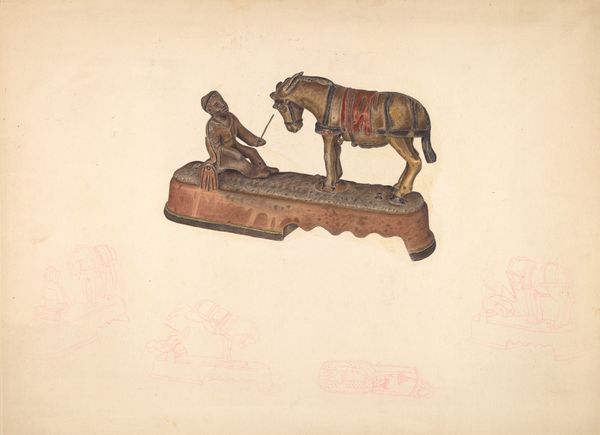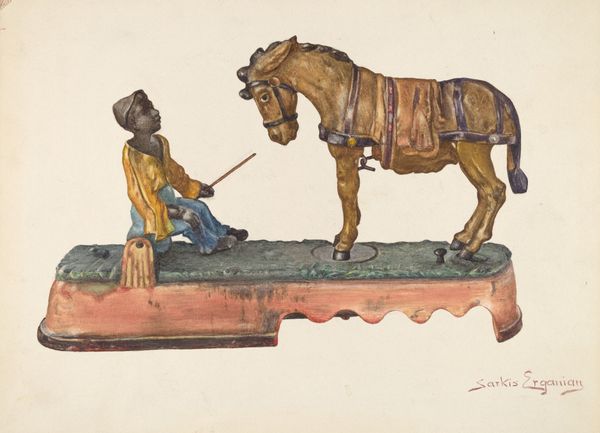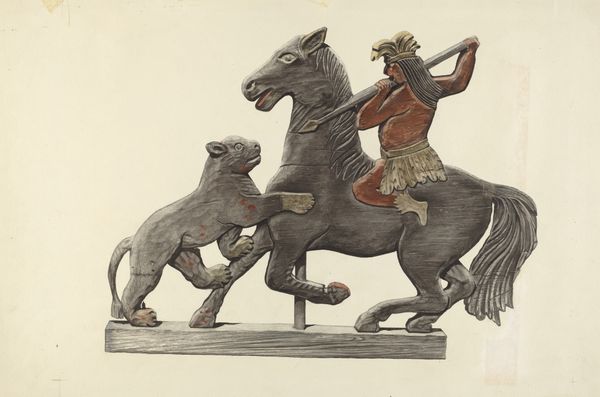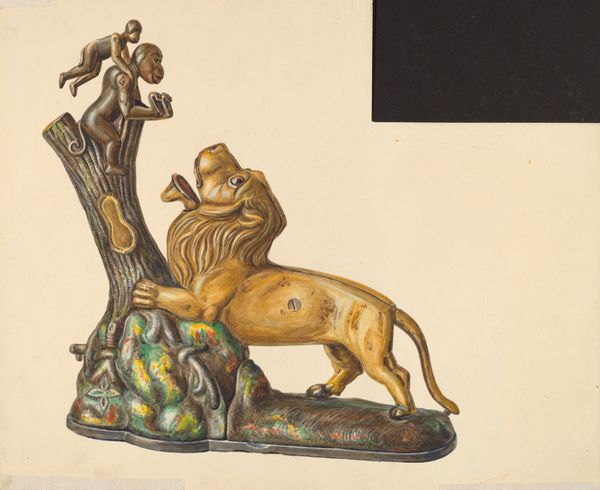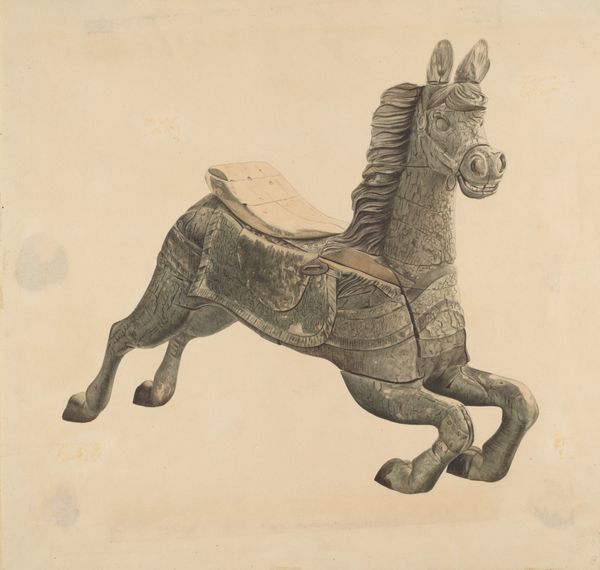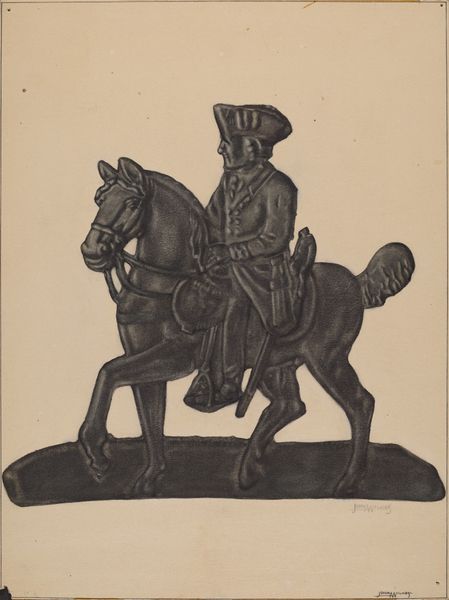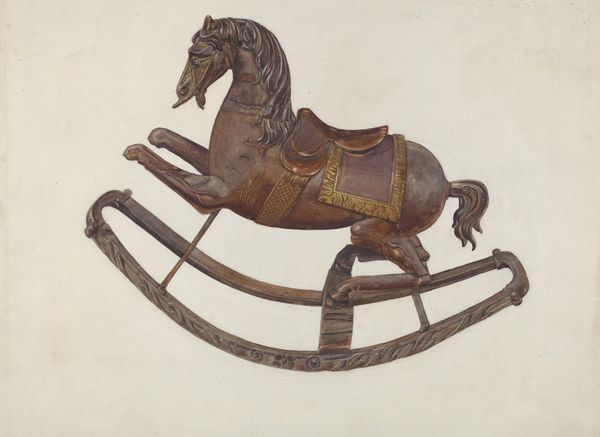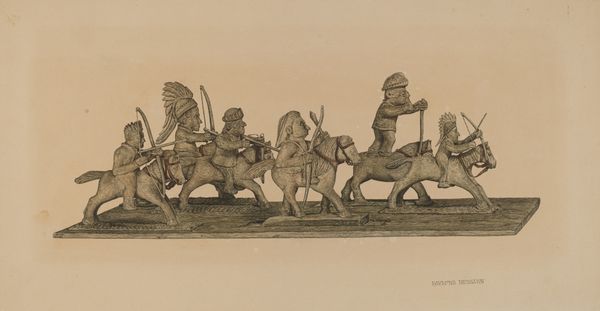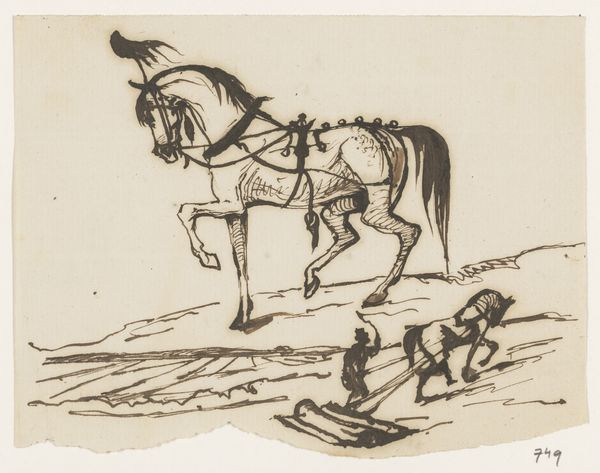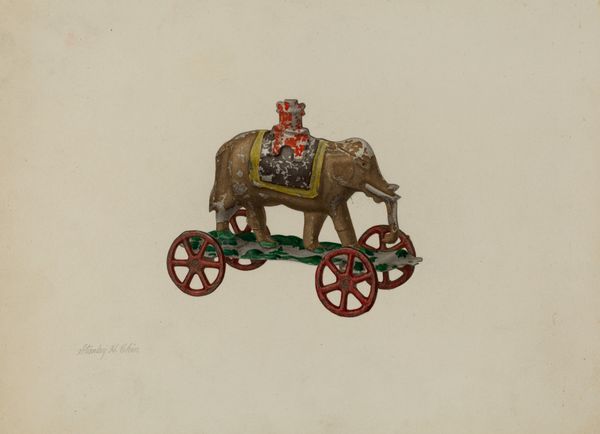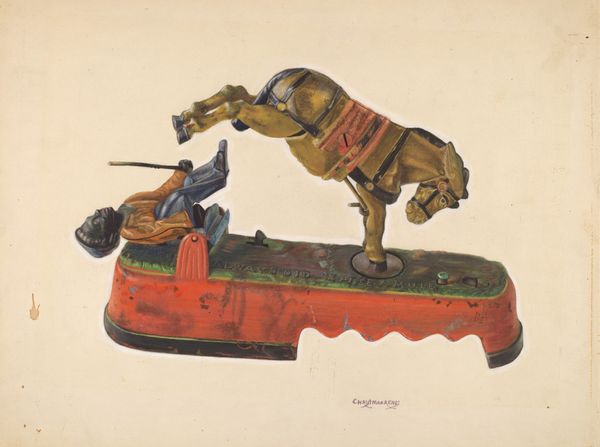
drawing, coloured-pencil
#
drawing
#
coloured-pencil
#
caricature
#
caricature
#
coloured pencil
#
watercolour illustration
Dimensions: overall: 22.6 x 30.5 cm (8 7/8 x 12 in.) Original IAD Object: 8 3/16" high; 10 1/4" long; 2 7/8" wide
Copyright: National Gallery of Art: CC0 1.0
Curator: Wow, that really jumps out, doesn’t it? It’s striking! Editor: Indeed. Here we have Florian Rokita's rendering of a "Toy Bank: 'I Always Did 'Spise a Mule'", circa 1937, primarily using colored pencil and some watercolour effects to really define the shadows. Curator: There’s something almost… melancholy about it. It’s so clearly intended to be playful – it's a toy!–but the way the light catches the subject gives it an almost aged quality, and also… something that seems based on racism to my eyes. Editor: Yes, these mechanical banks were commonly cast in iron and operated when a coin was placed, causing the figure to perform a humorous, albeit often racially stereotyped, action, frequently involving the animal eating the coin. These pieces speak volumes about early to mid 20th century modes of manufacture and the distribution and popular consumption of harmful racist caricatures. Curator: And it makes me think about who made them and how they profited on such portrayals, like this stereotypical African-American figure who is apparently 'spising' the mule, I assume a corruption of 'despising' maybe? The caricature seems embedded with layered social context...a strange and unpleasant view of economic activity. Editor: Precisely. Rokita, through this drawing, provides a lens into that fraught history of material culture. The colored pencil medium itself becomes significant here, offering a layer of "domesticated," perhaps almost intimate craftsmanship that contrasts with the original mass-produced cast-iron object it depicts. Curator: It makes you think about the circulation of these types of harmful portrayals and what type of labor that entails… from the creation, sales, ownership, display of a once beloved item from the childhoods of the long dead and gone… now a cringe reminder of America's past! Editor: Absolutely. In the drawing, even, the slight imperfections and handcrafted details point to the labour behind creating the *image* of the commodity, pushing back on a smooth industrial narrative by inviting a look at social production of an unfortunate memento from our collective consciousness.. Curator: So what might seem on the surface as a whimsical image of childhood ends up offering a somber reflection on our complicated engagement with consumerism, commodity production and deeply embedded prejudices. It holds quite a heavy, reflective gravity. Editor: Yes, an economy's underbelly is hard to stomach.
Comments
No comments
Be the first to comment and join the conversation on the ultimate creative platform.

